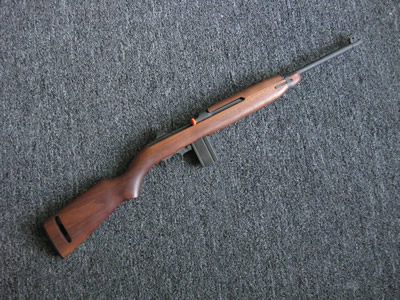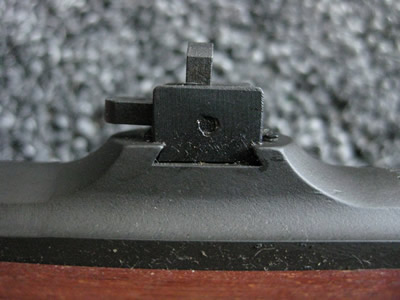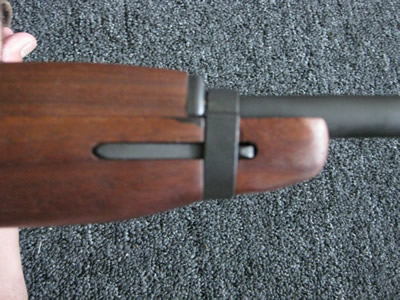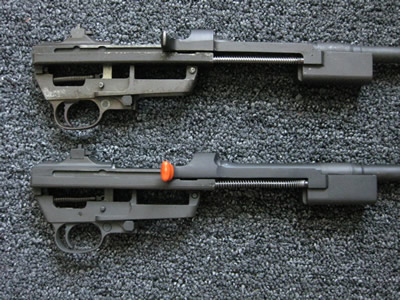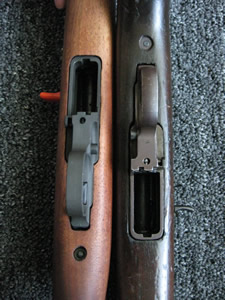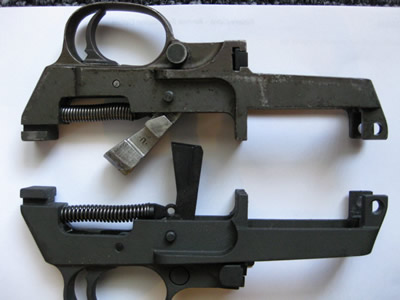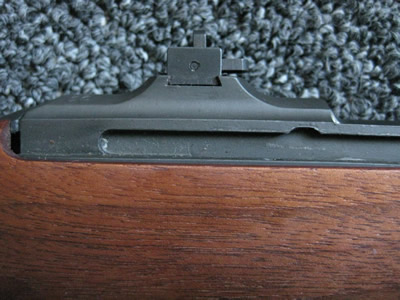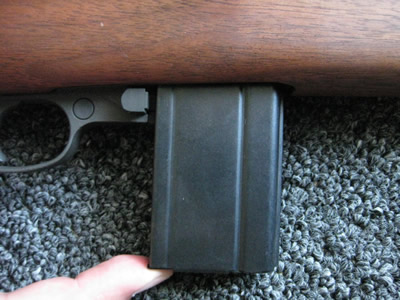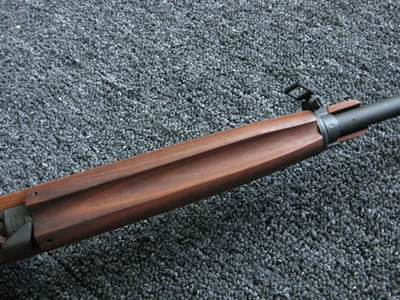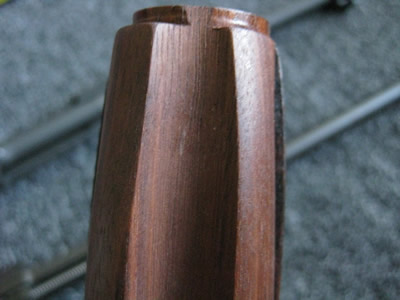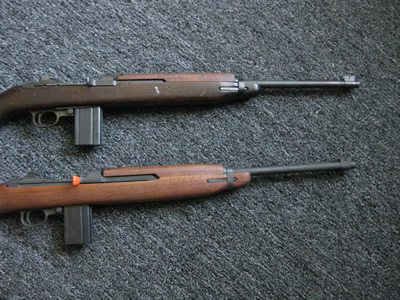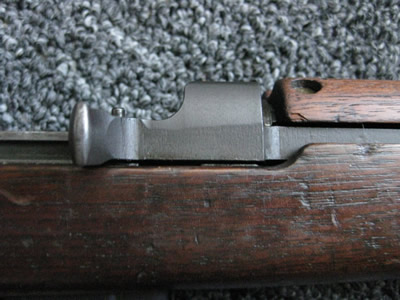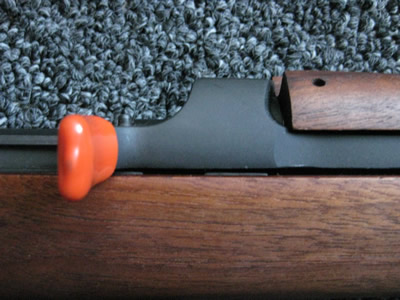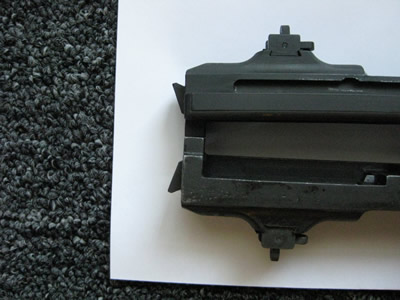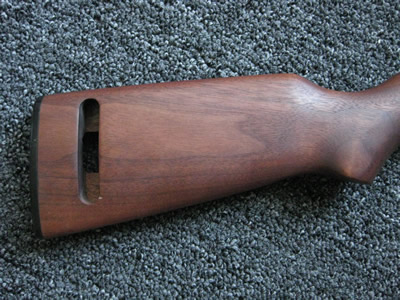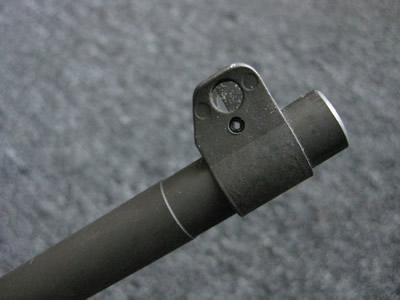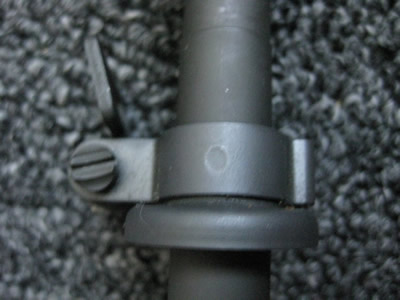Auto Ordnance M1 "ML" Carbine
Review Date: 8/8/2010
Author: Mike Ellis
American Tax Dollars at Work
It started several weeks ago, at work of all places. While perusing gunbroker, I stumbled upon an as-new Auto-ordnance M1 carbine, at a very low price. I put in a lowball bid, thinking there was no way it could go that low - the A-O Carbine is MSRP $899. Two days later, I was the winning bidder at $410. I wondered if I'd gotten a good deal, and was about to find out.
After a brief interlude, I had the chance to sit down and compare the Auto-Ordnance Carbine with my original production Inland model. This article is a summary of those comparisons.
Product Introduction
Several years ago Auto-Ordnance debuted a revamped version of the M1 carbine. While most manufacturers create carbines with adjustable sights, bayonet lugs, and flip safeties, A-O reviewers claim that this product is "just like a World War II gun, a D-Day gun", and that an original "pristine March 1943 Saginaw-made M1 Carbine" was studied for input on what such a piece might look like. Does A-O deliver? Is their reproduction faithful to the Normandy standard? Let's define what we're talking about.
In the 90th's case study on the carbine in Normandy, we arrived at the conclusion that such a carbine would generally be a highwood, with flip sight and type I band. This carbine would also have a type A (straight) style slide, push button safety, and many other details.
According to JC Harrison's "Collecting the M1 Carbine", a mint 1943 Saginaw Carbine should be a highwood, with flip sight and type I band. This carbine would also have an early (straight) style slide, push button safety, and many other details. Carbines produced by Saginaw S.G. would also adhere to this broad standard, as would Irwen Pedersen Carbines finished by Saginaw during the same time frame. No carbines by these three manufacturers featured the type B ("6 o'clock") slide, or lowwood stock in unaltered configuration.
OVERALL IMPRESSION
My first impression was a well-built product, with just a few differences apparent from USGI. As I looked further, this slowly began to change. After a moment, two things quickly stuck out. The stock was in lowwood configuration, and the slide was a type B. Neither were correct for a "Normandy" carbine. Apparently A-O didn't study their original example very hard...
True to claim, the A-O carbine features the original type flip sight, type I band, and push-button safety. The majority of parts were phosphated, though the extractor was "in the white", as are some original GI extractors. The hammer and some pins appear to be blued.
Both actions appeared highly similar, of good quality, and parts interchangeable with minimal modification. Auto-Ordnance made extensive use of cast / MIM (metal injection molded) parts in their M1 Carbines, 1911 pistols, and Thompson reproductions. While the metalwork should stand up quite well, casting marks can be found in many places. In addition, castings are not quite as strong as the original GI forging process.
Magazines were interchangeable between both Carbines, to include both GI, A-O, and aftermarket parts.
Trigger housing was probably the closest part to USGI, dimensionally, easily exchanging with my GI carbine, and containing mostly correct parts for a 1942 or 1943 produced example. Casting marks are quite visible.
The op-rod channel has only one takedown hole, but this is also a feature of some (Underwood) Carbines, though not Inland.
Problems?
The front band was bent, like the lower-quality reproduction bands currently on ebay. For an $899 product, this is not a good sign.
The magazine lockup was adequate, but the magazine rocked noticeably forward and backward even after being locked into the magazine well. This goes along with the generally sloppy impression gained upon closer inspection.
Disconcertingly, the entire action rattled within the stock, including when the trigger was pulled - the visible gap which opens up between the receiver heel and the tang shows this off quite nicely. We'll get into this further down in the review.
The Major Differences
Immediately there were several differences that spring to mind. While some of these would only bother the hyper-anal (myself), others may make or break your deal.
My favorite difference is in the markings - on the upper receiver, A-O has clearly defined this weapon as the "U.S. CARBINE CAL .30 ML". Perhaps due to legal issues? I wonder how many other people have noticed this...
This was the "super-deluxe" walnut-stocked model, and the stock is much thinner than GI models I've handled. The second image compares the width of the A-O handguard/stock to standard GI.
The stock is the later lowwood type, typically not seen during the Normandy campaign. The A-O stock is also slightly bulbous in appearance, similar to the much-maligned M2 carbine "potbelly" stocks. While not completely wrong per se, if I were to pay $899 for a "perfect reproduction", I'd demand it be the first pattern I-cut, highwood, bullnose variety.
Randomly, the A-O stock cannot be used with GI-length handguards, and visa-versa. The below image shows what happens when you try - the band is too far forward or too far back to properly engage the bandspring.
In addition to the stock being different, the buttplate was some sort of "invented" type, as found only on A-O carbines. Both buttplate and screw appear to be painted, and whatever the finish it began to chip and flake with one trip to the range. Certainly not a 1:1 perfect reproduction...
The slide retaining notch is cut slightly shallow, compared to a GI carbine. While the A-O example can still lock the slide back, it is prone to accidental release, and this can be a problem if for some reason your finger is in the way, or you're at a range where you must lock the slide back.
The A-O slide is the "6 o'clock" type, found on 1944 production and later, and commonly associated with postwar rebuilds and the M2. Again, this can hardly be called a true reproduction. Fortunately, my early-type GI slide did interchange easily, and functioned fine, but this is a rather large part to overlook.
The A-O receiver does take GI parts, but it's also got slightly different contours from GI models. There is a small cutout to the rear of the receiver which is non-existent on the A-O model - stocks must be modified accordingly.
The biggest difference? The A-O carbine's front trigger housing lug is approximately 1/8" further forward than on GI carbines. In the images below, the rear lugs have been placed end-to-end, and you can see the difference between the front lugs.
What does this mean? The A-O carbine will fit into USGI wood, but the stocks will require some modification. Given that the A-O stock is already incorrect in contours, it's more difficult to correct the issue.
It's further visible by comparing how far forward both trigger housings sit when the actions are assembled.
Other Differences
While not a deal-breaker, the buttstock contours were slightly different than GI Carbines I'm used to handling.
The front sight is held on by a roll pin, not the solid type on wartime GI models. Casting marks on the front sight are visible.
The first pattern barrel band is held together with just one spot weld - no manufacturer did this, and it makes the band weaker as a result.
Magazine release was an M2 type, meant to engage the third lug on the 30 round magazine. Again, this is incorrect for an "early" Carbine, but consistent an eye towards cost effectiveness.
The Range
I took the A-O carbine, one GI mag, one A-O mag, and one aftermarket mag out to the local range, and test fired 50 rounds of Winchester ammunition. The first 10 rounds I encountered four failure to feed malfunctions. The problem? It appears that A-O has also cut corners on the return spring.
Each round fired was properly ejected, but the carbine return spring had insufficient force to load the next round. Replacing the A-O return spring with a fresh USGI spring solved the problem. Following this part replacement, the next 40 rounds cycled without error.
Needless to say, it was disappointing to see that a virtually new weapon required replacement parts.
The A-O carbine was reasonably accurate, even with the sloppy fit between action and stock. This could probably be improved by bedding the action, but again, these modifications should not be required for a new weapon.
Conclusions
The A-O carbine is overpriced at $899. I was comfortable paying $410, but would probably not do this again. I'm still not sure whether I want to update this carbine with correct early parts, or trade it for a GI carbine.
To be fair, this was a secondhand purchase. While I will say that mine was in pristine condition, it's worth noting that A-O may have improved their product since mine was manufactured. On the other hand, as of 8-8-2010, the A-O website continues to show the same type carbine, including the "potbelly" type stock, and a visibly bent front band mounted.
If I were given the opportunity to improve this product, I would recommend the following:
o. Improve stock contours - use the highwood, I cut reproductions sold by Boyd's and the CMP.
o. Use an early type slide, not the "6 o'clock" model
o. Beef-up the type I band with 3 proper spot weldsWhile there are other things which could be done to improve the accuracy of the design, these three points would go furthest to approximate the 1942-era carbine.
The A-O Carbine is not a true reproduction of the early carbine, but it is much better than the standard postwar rebuild. For reenactors unwilling to drill and tap an original barrel, or unable to replace the later rebuild parts, this may be the way to go. I would see no major problem with it at events if the improper stock were replaced.
90th IDPG Reviews



